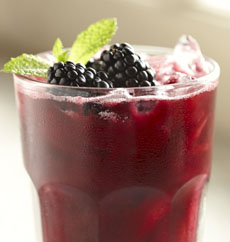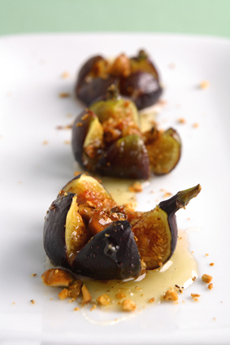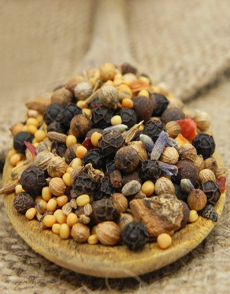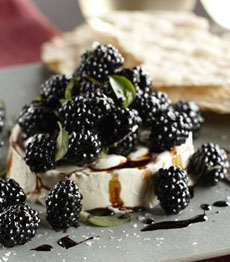|
Today we present spice blends you should know, even if you aren’t about to use them immediately. Seasonings are the easiest ways to add different flavors to foods. If you’re looking at dieting with a month of broiled chicken or fish, for example, each of these blends will make each plate taste different.
While the blends originated in specific countries, they are cross-cultural. You can change the perspective of a classic French dish by adding Indian spices, for example. The basic ingredients and technique are still French, but with a nice touch of fusion flavor.
You can also use spice blends in non-traditional ways: to flavor mayonnaise or yogurt or on fruit, for example. Our tip is to be adventurous with spices and conquer the world. (At least, the culinary world.)*
Several months ago in the New York Times, Mark Bittman recommended making your own spice blends. He recommends whole spices, which are typically of better quality than ground spices, and stay fresh longer in their whole state.
If you buy them in bulk, they can be surprisingly inexpensive. You can give what you don’t need as gifts to friends and neighbors, and you may still be ahead. Check at local international markets, on Amazon.com or the websites of specialists like Penzeys. Their website has plenty of options, but is surprisingly bare-bones, with no photos of the spices. For beautiful spice photos, check out SilkRoadSpices.ca, a Canadian e-tailer.
|
|

Chinese Five Spice, used to cure artisan pork. Photo courtesy McCormick. |
_____________
*Mark Bittman advises: “…don’t feel as if you have to relegate these mixtures solely to their original uses, like jerk spice on chicken or garam masala in curry. Rub them on meat, poultry, seafood, tofu, or vegetables before grilling, broiling, or roasting; cook them in oil or butter to begin braises or stir-fries; or just sprinkle them on almost anything. My recently regenerated enthusiasm for these came about when I sampled a couple of blends on raw apple slices with ice cream, which was transformational.”
_____________
HOW TO START
You can blend and then grind your spices as needed. This is traditionally done with a mortar and pestle, but you can repurpose an old coffee grinder just for spices. First, clean it and then fill it with raw white rice; grind and then toss the rice. If you still find a residual coffee aroma, do it again.
You’ll get more flavor from your spices if you toast them first. Place them whole in a small skillet over medium heat. Shake the pan occasionally until the fragrance rises, 2 to 5 minutes. Cool for a few minutes, then grind.
Store all ground spices in tightly sealed jars in a dark, cool place. While some will keep well for months, for the most potency make only what you need for a few weeks.
Here are the first five spice blends: adobo from Mexico, chili powder from Mexico, five spice from China, garam masala from India, and jerk from Jamaica.
|

Garam masala, an Indian spice blend that
varies by region and individual cook. Photo
courtesy SilkRoadSpices.ca. |
|
ADOBO
Adobo is a popular Mexican spice mix: spicy and rich in flavor, but not hot. Traditional blends have no added salt. People on low-salt diets can use it in place of salt (but check the label).
Traditional uses: Rub on chicken, fish, or pork with a bit of lime juice and salt to taste, then grill or broil. Add to chili or taco fixings, or perk up guacamole.
Traditional ingredients: garlic, onion, black pepper, oregano, cumin and cayenne red pepper.
Bittman’s recipe: 2 tablespoons granulated garlic, 1 tablespoon salt, 4 teaspoons dried oregano, 1 teaspoon black pepper, 1 teaspoon turmeric, 2 teaspoons cumin, 2 teaspoons onion powder and 2 teaspoons ground ancho.
CHILI POWDER
There are different strengths of chili powder, depending on the heat of the chiles used. Some are labeled medium or hot.
Traditional uses: Chili powder is the backbone of traditional Mexican dishes such as red chili and tamales. It is added to mole sauce, stews, beans, and rice.
Traditional ingredients: ancho chili pepper, red pepper, cumin, crushed red pepper, garlic and Mexican oregano.
Bittman’s recipe: Toast and grind 4 teaspoons cumin seeds, 1 teaspoon black peppercorns, and 4 teaspoons coriander seeds; stir in 2 tablespoons dried Mexican oregano, 4 tablespoons ground ancho chiles, and 1 teaspoon cayenne.
|
CHINESE FIVE SPICE
Five spice powder is a versatile Chinese seasoning. The five spices vary by region and individual preference.
Traditional uses: stir frys. The spice has traveled far beyond that with innovative chefs. You’ll find it in artisan chocolate bars, for example.
Traditional ingredients: cassia cinnamon, star anise, anise seed, ginger and cloves. Sichuan peppercorns and fennel seeds are also commonly included.
Bittman’s recipe: Grind the following (no need to toast): 2 tablespoons Sichuan peppercorns, 12-star anise, 3 teaspoons whole cloves, two 3-inch cinnamon sticks, and ¼ cup fennel seeds.
GARAM MASALA
As with other all-purpose spice blends, including curry and Chinese five spice, the ingredients in this Indian spice vary by region and individual cook.
Traditional uses: very popular on cauliflower, fish, lamb, pork, poultry and potatoes.
Traditional ingredients: coriander, black peppercorns, cardamom, cassia cinnamon, kalonji, caraway, cloves, ginger and nutmeg.
Bittman’s recipe: Toast and grind the seeds of 20 cardamom pods, 2 3-inch cinnamon sticks, 2 teaspoons whole cloves, 1 teaspoon nutmeg pieces, 2 tablespoons cumin seeds, and 2 tablespoons fennel seeds.
JERK
Jerk seasoning is a hot Jamaican spice blend. There are different jerk blends for chicken, fish, and pork.
Traditional uses: grilled chicken, fish, pork chops, pork tenderloin, whole roast pig; also.
Traditional ingredients: paprika, allspice, ginger, red pepper, sugar, ground Grenadian nutmeg, black pepper, garlic, thyme, lemon grass, cinnamon, star anise, cloves and mace.
Bittman’s recipe: Grind the following (no need to toast): 2 tablespoons allspice berries, ½ teaspoon nutmeg pieces, 2 teaspoons black peppercorns, and 4 teaspoons dried thyme. Combine with 2 teaspoons cayenne, 2 tablespoons paprika, 2 tablespoons sugar, and ¼ cup salt. Before using, add some minced fresh garlic and ginger.
Continue to Part 2 the next five blends: nori shake from Japan, pimentón from Spain, quatre épices from France, ras el hanout from Morocco and za’atar from the Middle East.
CHECK OUT WHAT’S HAPPENING ON OUR HOME PAGE, THENIBBLE.COM.
|
|









